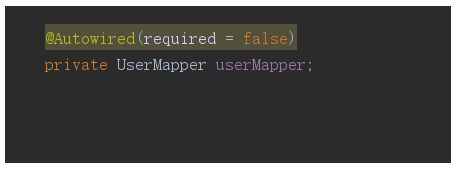python GUI框架pyqt5 對(duì)圖片進(jìn)行流式布局的方法(瀑布流flowlayout)
流式布局
流式布局,也叫做瀑布流布局,是網(wǎng)頁(yè)中經(jīng)常使用的一種頁(yè)面布局方式,它的原理就是將高度固定,然后圖片的寬度自適應(yīng),這樣加載出來(lái)的圖片看起來(lái)就像瀑布一樣整齊的水流淌下來(lái)。
pyqt流式布局
那么在pyqt5中我們?cè)趺词褂昧魇讲季帜兀縫yqt沒(méi)有這個(gè)控件,需要我們自己去封裝,下面是流式布局的封裝代碼。
class FlowLayout(QLayout): def __init__(self, parent=None, margin=0, spacing=-1): super(FlowLayout, self).__init__(parent) if parent is not None: self.setContentsMargins(margin, margin, margin, margin) self.setSpacing(spacing) self.itemList = [] def __del__(self): item = self.takeAt(0) while item: item = self.takeAt(0) def addItem(self, item): self.itemList.append(item) def count(self): return len(self.itemList) def itemAt(self, index): if index >= 0 and index < len(self.itemList): return self.itemList[index] return None def takeAt(self, index): if index >= 0 and index < len(self.itemList): return self.itemList.pop(index) return None def expandingDirections(self): return Qt.Orientations(Qt.Orientation(0)) def hasHeightForWidth(self): return True def heightForWidth(self, width): height = self.doLayout(QRect(0, 0, width, 0), True) return height def setGeometry(self, rect): super(FlowLayout, self).setGeometry(rect) self.doLayout(rect, False) def sizeHint(self): return self.minimumSize() def minimumSize(self): size = QSize() for item in self.itemList: size = size.expandedTo(item.minimumSize()) margin, _, _, _ = self.getContentsMargins() size += QSize(2 * margin, 2 * margin) return size def doLayout(self, rect, testOnly): x = rect.x() y = rect.y() lineHeight = 0 for item in self.itemList: wid = item.widget() spaceX = self.spacing() + wid.style().layoutSpacing(QSizePolicy.PushButton,QSizePolicy.PushButton, Qt.Horizontal) spaceY = self.spacing() + wid.style().layoutSpacing(QSizePolicy.PushButton,QSizePolicy.PushButton, Qt.Vertical) nextX = x + item.sizeHint().width() + spaceX if nextX - spaceX > rect.right() and lineHeight > 0: x = rect.x() y = y + lineHeight + spaceY nextX = x + item.sizeHint().width() + spaceX lineHeight = 0 if not testOnly: item.setGeometry(QRect(QPoint(x, y), item.sizeHint())) x = nextX lineHeight = max(lineHeight, item.sizeHint().height()) return y + lineHeight - rect.y()
封裝好的流式布局類,我們只要傳入相應(yīng)的layout之后,他就會(huì)自動(dòng)計(jì)算頁(yè)面的元素,適應(yīng)頁(yè)面的寬度。
下面是我們寫的一個(gè)瀑布流顯示圖片的代碼:
from PyQt5.QtCore import QPoint, QRect, QSize, Qtimport osfrom PyQt5 import QtCore, QtGui, QtWidgetsfrom PyQt5.QtWidgets import ( QApplication, QLayout, QPushButton, QSizePolicy, QWidget, QGridLayout)class Window(QWidget): def __init__(self): self.imageheight = 100 super(Window, self).__init__() self.resize(400, 300) flowLayout = FlowLayout() highlight_dir = './' self.files_it = iter([os.path.join(highlight_dir, file) for file in os.listdir(highlight_dir)]) print() for file in iter(self.files_it): layout = QGridLayout() pixmap = QtGui.QPixmap(file) if not pixmap.isNull():autoWidth = pixmap.width()*self.imageheight/pixmap.height()label = QtWidgets.QLabel(pixmap=pixmap)label.setScaledContents(True)label.setFixedHeight(self.imageheight)print(autoWidth)label.setFixedWidth(autoWidth)#label.setFixedSize(100, 50)layout.addWidget(label)widget = QWidget()widget.setLayout(layout)flowLayout.addWidget(widget) self.setLayout(flowLayout) self.setWindowTitle('Flow Layout')class FlowLayout(QLayout): def __init__(self, parent=None, margin=0, spacing=-1): super(FlowLayout, self).__init__(parent) if parent is not None: self.setContentsMargins(margin, margin, margin, margin) self.setSpacing(spacing) self.itemList = [] def __del__(self): item = self.takeAt(0) while item: item = self.takeAt(0) def addItem(self, item): self.itemList.append(item) def count(self): return len(self.itemList) def itemAt(self, index): if index >= 0 and index < len(self.itemList): return self.itemList[index] return None def takeAt(self, index): if index >= 0 and index < len(self.itemList): return self.itemList.pop(index) return None def expandingDirections(self): return Qt.Orientations(Qt.Orientation(0)) def hasHeightForWidth(self): return True def heightForWidth(self, width): height = self.doLayout(QRect(0, 0, width, 0), True) return height def setGeometry(self, rect): super(FlowLayout, self).setGeometry(rect) self.doLayout(rect, False) def sizeHint(self): return self.minimumSize() def minimumSize(self): size = QSize() for item in self.itemList: size = size.expandedTo(item.minimumSize()) margin, _, _, _ = self.getContentsMargins() size += QSize(2 * margin, 2 * margin) return size def doLayout(self, rect, testOnly): x = rect.x() y = rect.y() lineHeight = 0 for item in self.itemList: wid = item.widget() spaceX = self.spacing() + wid.style().layoutSpacing(QSizePolicy.PushButton,QSizePolicy.PushButton, Qt.Horizontal) spaceY = self.spacing() + wid.style().layoutSpacing(QSizePolicy.PushButton,QSizePolicy.PushButton, Qt.Vertical) nextX = x + item.sizeHint().width() + spaceX if nextX - spaceX > rect.right() and lineHeight > 0:x = rect.x()y = y + lineHeight + spaceYnextX = x + item.sizeHint().width() + spaceXlineHeight = 0 if not testOnly:item.setGeometry(QRect(QPoint(x, y), item.sizeHint())) x = nextX lineHeight = max(lineHeight, item.sizeHint().height()) return y + lineHeight - rect.y()if __name__ == ’__main__’: import sys app = QApplication(sys.argv) mainWin = Window() mainWin.show() sys.exit(app.exec_())
到此這篇關(guān)于python GUI框架pyqt5 對(duì)圖片進(jìn)行流式布局的方法(瀑布流flowlayout)的文章就介紹到這了,更多相關(guān)python pyqt5圖片流式布局內(nèi)容請(qǐng)搜索好吧啦網(wǎng)以前的文章或繼續(xù)瀏覽下面的相關(guān)文章希望大家以后多多支持好吧啦網(wǎng)!
相關(guān)文章:
1. 父div高度不能自適應(yīng)子div高度的解決方案2. ASP.NET MVC解決上傳圖片臟數(shù)據(jù)的方法3. CSS3實(shí)例分享之多重背景的實(shí)現(xiàn)(Multiple backgrounds)4. JSP狀態(tài)管理的簡(jiǎn)單介紹5. jsp+mysql實(shí)現(xiàn)網(wǎng)頁(yè)的分頁(yè)查詢6. servlet+jsp實(shí)現(xiàn)過(guò)濾器 防止用戶未登錄訪問(wèn)7. 選擇模式 - XSL教程 - 28. Java之JSP教程九大內(nèi)置對(duì)象詳解(中篇)9. 淺談XML Schema中的elementFormDefault屬性10. ASP中SELECT下拉菜單同時(shí)獲取VALUE和TEXT值的實(shí)現(xiàn)代碼

 網(wǎng)公網(wǎng)安備
網(wǎng)公網(wǎng)安備